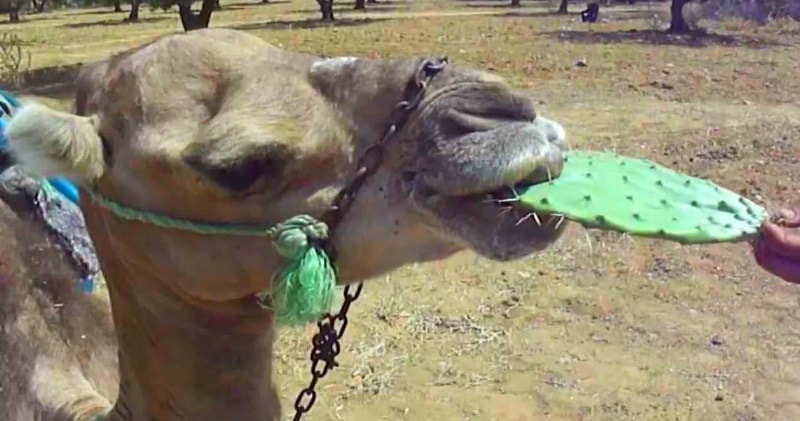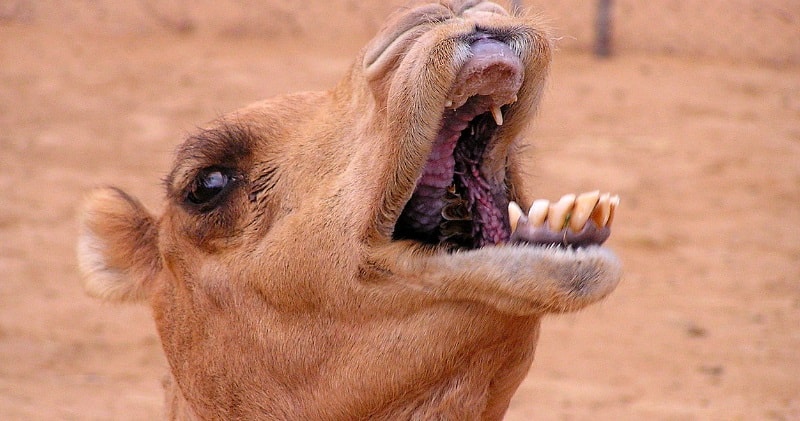Dromedary camels tear through prickly pear cactus with 6 inch needles.Their mouths are adapted to eat whole pieces of prickly pear cactus, six-inch long needles and all.Camel mouths are full of cone-shaped papillae that look like this.
source: boingboing / image: White1979Rose
These protrusions are partly keratinised – keratin being the hard stuff your nails are made out of – which makes them tough n’ semi-rigid, feeling a bit like the middle of tupperware lids when you squish ’em.
The plastic-ey cones not only help protect the mouth from internal damage – scratches, abrasions etc. – when they feed on thorns and other nasties, but they also manipulate the food to go down in one direction.
Advertisement
They also likely do feel some pain and discomfort eating this stuff, as much of their mouths – particularly their lips – are very sensitive, despite the papillae.
source: boingboing / image: wikimedia
Camels are herbivores. Because they live in the dessert, they have to be able to eat desert plants thorny cacti would cause other animals a great deal of difficulty.
One of the most amazing features of the camel is the way it processes water. The camel’s blood remains thin enough to always circulate and remove body heat. The camel can survive even if it loses 40% of the water in its body. It can survive for very long periods without water, and when it drinks, it can consume more than 100 litres in about 10 minutes.












